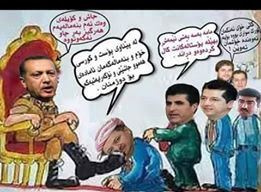It survived eight centuries of plague, war, revolution, and the Nazis. How could it be burning?
Witness the Fall of Notre Dame It survived eight centuries of plague, war, revolution, and the Nazis. How could it be burning?
PARIS — It was Holy Week and near the equinox and the setting sun was as fierce red-orange as the terrible blazing engulfing Notre-Dame — Notre-Dame! , collapsed. It was near 7:50 pm The sky was still light.
I was standing in a hushed, thronged along the Quai d’Orleans of the Ile Saint Louis facing the back of the basilica, and when I watched the spire fall, I gasped and choked back tears. In this, I was not alone. Billows of pale yellow smoke rose from the nave. They became iridescent against the sky. The firefighters spraying plumes of water onto what was once the roof seemed tiny against the enormity of the structure.
How could Notre-Dame be burning? How did Notre-Dame survive for eight centuries survived the plague and wars of religion, survived the French Revolution, survived the Nazis — be falling? Notre-Dame, the heart of Paris, not only a Catholic site but the preeminent symbol of European cultural consciousness, the heart of France, the kilometer zero from which all its fastest villages are measured — how could this majestic structure collapse so fast? I looked around at the faces with me in the crowd. Written on them was sadness and pain. But also curiosity. A few giggles, if the enormity of the loss had not yet settled.
MORE STORIES
Photos: The Devastation of Notre Dame Cathedral
ALAN TAYLOR
The Myth of Parisian Life
DOMINIC TIERNEY
Yellow-West protesters attend a demonstration in Paris on February 16.
France's Double Standard for Populist Uprisings
RACHEL DONADIO
The picture shows the messages '#Me too' and #Balancetonporc ('expose your pig') on the hand of a protester.
France, Where #MeToo Becomes #PasMoi
RACHEL DONADIO
The silence was interrupted by the clicking or camera lenses. And then there were the cell phones. Hundreds of people filming, photographing, sharing the tragedy, so many that the networks were jammed. Try to capture in a few pixels what stood for centuries, a symbol of endurance, or architectural achievement. Built in the Gothic era, destroyed in the social media era.
The authorities will now investigate. The basilica was under construction. The scaffolding still stands, while the nature itself burns. Nearby, people in cafes were watching the blaze over drinks. Out of sight of the basilica, they streamed images of the flames on their phones.
To those of us who live in Paris, Notre-Dame is known as a landscape, and as solid as a mountain. How could it have burned so fast? I walk it so often. I like it at night, when the sculptures on the outside come alive under the spotlights, the gargoyles and saints and the few fallen angels plunging upside down from heaven above the central door.
President Emmanuel Macron visited the scene after dark to survey. The mayor of Paris, Anne Hidalgo, spoke on television of seeing the flames from her office window in the Hôtel de Ville, and feeling "powerless." This loss will leave a black mark on these officials, even if the fire wasn't in their hands. If I write this, more than 400 firefighters are fighting the blaze. It has not yet been subdued. On French television, a historian of religion, Jean-François Colosimo, described the scene as "images of the end of the world." The fire, he said, seemed to communicate "the extreme fragility of our situation."
Messages come from friends around the world— “Are you okay?” - as if this were another terrorist attack, or a death in the family. In a way, it's a death. In the human family. We are all shocked together. On television, they're showing the embers of a burning scaffolding. The sparks and ash float into the night air, like fireflies.
























.jpg)





















































.jpg)
Inga kommentarer:
Skicka en kommentar